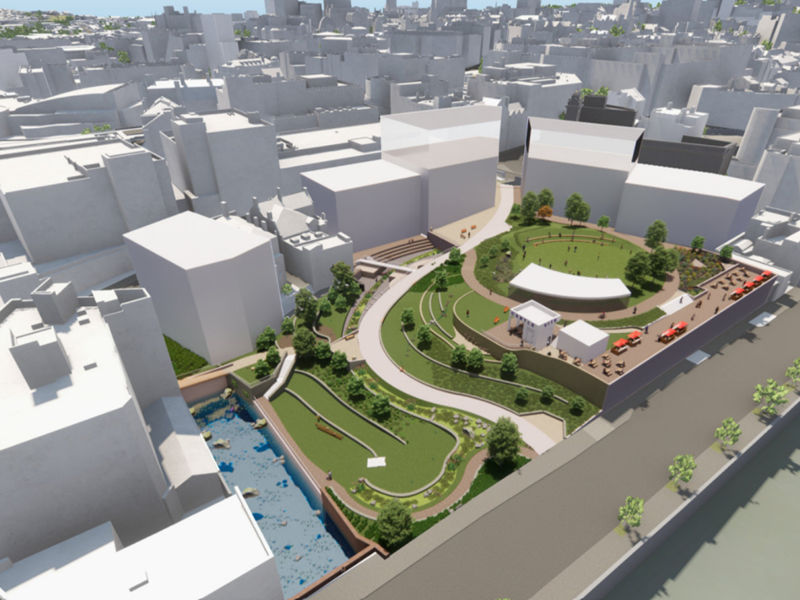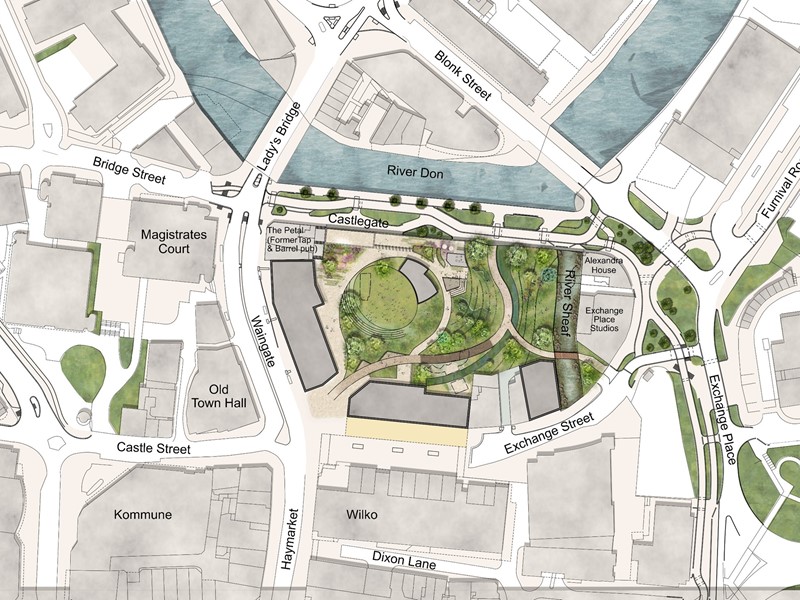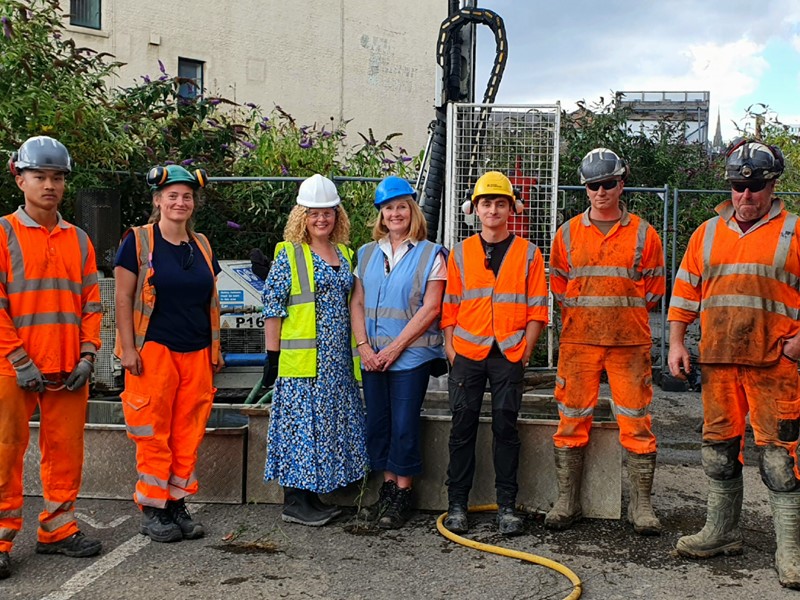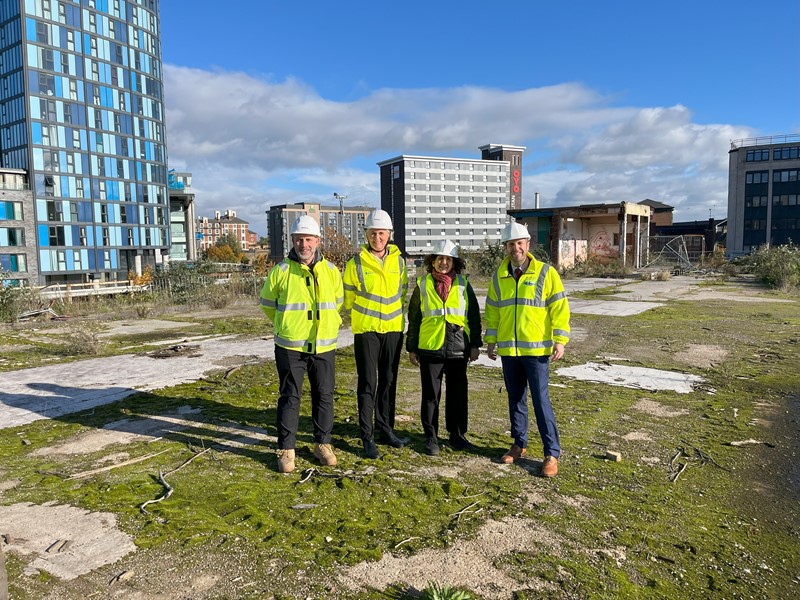An exciting planning application has been submitted by the Council for the transformation of the Castle site public space, including an events space, new public art and opening up the River Sheaf.
Castlegate archaeology work to feature on BBC's Digging for Britain

The archaeologists who used science to reveal more of Sheffield Castle’s underground secrets are to feature on BBC Two's Digging for Britain on Sunday 22nd of January.
The findings from the latest archaeology work at Castlegate reveal more about the form and the position of Sheffield Castle’s moat and confirm the size and the structure of the motte.
Archaeology and heritage specialists Wessex Archaeology conducted another borehole survey last summer as part of helping to inform Sheffield Council’s redevelopment plans.
The castle was built on a bedrock promontory at the confluence of the River Sheaf and the River Don. A team of geoarchaeologists have been analysing the core samples to build up more understanding of what the landscape would have been like centuries ago.
The investigations will feature on BBC Two’s Digging for Britain at 8pm on Sunday 22nd January 2023.
Milica Rajic, Infrastructure Director at Wessex Archaeology, said:
“By analysing sediments from the borehole core samples we have been able to add more to the existing knowledge and provide a greater understanding of the history of Sheffield Castle. We’re excited that our work has helped to pinpoint in more detail how the people who built this impressive castle may have exploited the natural gradients and river channels the landscape offered.”
The key findings from the latest borehole survey including more information about the location of the moat to the north east, where the moat exploited a former channel of the River Sheaf. The analysis has also revealed in places the motte was approximately 50 metres in diameter.
Archaeologist and Digging for Britain presenter Dr Cat Jarman, who visited Wessex Archaeology’s labs said:
“This is such an exciting example of how science can reveal the nature of a site that is otherwise completely lost to us. Sheffield Castle was once an imposing part of the local landscape and to find evidence of its substantial motte helps us understand the castle's role in the city's development. It's also wonderful to be able to show these scientific methods on a popular programme like Digging for Britain, as they rarely make it to TV screens!”
Cllr Julie Grocutt, Co-Chair of the Transport, Regeneration and Climate Policy Committee, said:
“It has been so exciting to learn more about the secrets of Sheffield Castle, the birthplace of our city, throughout this project. As we progress with our plans to reinvigorate Castlegate and look towards the future, it’s fascinating to find out more about its origins and our city’s history. It will be fantastic to see the work Wessex Archaeology has been conducting on our television screens. I’ll be sure to be tuning in on January 15th!”
Notes to Editors
Images to be credited to Wessex Archaeology.
For interview requests and queries please contact Pippa Treavett, Communications Manager by email p.treavett@wessexarch.co.uk
Wessex Archaeology previously worked on the Castlegate site in 2018. To learn more about the work with Sheffield City Council and other key stakeholders in the city previously head to the Wessex Archaeology website – www.wessexarch.co.uk



